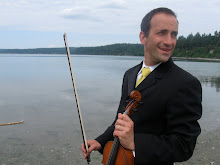Dear Nursery Families,
After I wrote the following piece for parent & child families, I thought it may be of interest to some of you. Some of you may have read Ingun Schneider's article previously--I tend to publish it to parent & child families every year.
There were several topics that we discussed last session that I will follow up on during the break between sessions. We discussed crayons and coloring for young children. I recommend the book Understanding Children's Drawings by Michaela Strauss, in which the author has studied pictures (scribbles) from around the world and drawn interesting conclusions about developmental similarities in children and how these are reflected in archetypal early forms--the scribble, the swirl, the dot, the cross, the closed circle. Strauss also notes that it is not necessarily good or bad that a child starts drawing at 18 months or 2 years or 3 years or 4, noting that children who start a little later tend to go through the same developmental archetypes of all children, just a little more quickly. In class, I reflected that it is fine for our youngest children to draw but we need not worry if our children show no interest in drawing. Helle Heckmann--master early childhood teacher from Denmark--reminded me fairly strongly in an evaluation that in the first 4 years, our children benefit more from gross motor experiences (the crawling, climbing, tumbling, wrestling, building, falling, and so forth) and that I would want to avoid distracting children from this by having too many fine motor activities such as stringing cranberries together. I have heard and read elsewhere of the value of allowing our youngest children to move freely and develop their gross motor skills first, and then this will help their fine motor skills when the time is right.
When I began as an assistant teacher in 1997, early childhood teachers in Waldorf Classrooms were beginning to take a hard look at the use of block crayons in early childhood--up to that point they seemed a natural gift for early childhood classrooms: they did not break; no paper to be removed; they seemed to encourage exploration and divergent artistic thinking rather than outlining and perhaps more convergent form making. Remedial teachers such as Ingun Schneider were asking kindergarten teachers to take a second look the the use of thick, block crayons. As Schneider points out in her article on supporting the development of the hand, our arms and shoulders become very tense when we hold a block crayon; they are noticeably less tense when holding a stick crayon and pencil. Remedial teachers began to wonder if the overuse of block crayons in kindergarten classes were interfering with a smooth and natural process of developing pencil grip and learning to write. I remember my lead teacher packing away all the block crayons and purchasing stick crayons to use exclusively.
Not long after this I was fortunate to take a week of classes with Ingun Schneider as part of my training to become a lead teacher, and for me the use of stick crayons for very young children (including toddlers) made a lot of sense. As with any educational system, there are different opinions and streams, and I respect colleagues who make more frequent use of block crayons. That being said, one preference I have for stick crayons (or even sturdy colored pencils) for young children is that they help dispel the illusion that in a Waldorf early childhood setting everything needs to be soft and fuzzy: there are places for lines and angles as in the crosses and scribbles young children make as they work with crayons; and there is space for lines and hard spaces and toddlers work through conflicts as we have read in recent articles on toddler conflicts.
Schneider's article provides helpful insights into how we can help our children develop; she begins with infancy and early toddlerhood. If we can allow our children opportunities to move, climb, roll, crawl, fall, and tumble, we allow them the chance to form the foundations for fine motor development in future years.
With warmth and light,
William Geoffrey Dolde
Not long after this I was fortunate to take a week of classes with Ingun Schneider as part of my training to become a lead teacher, and for me the use of stick crayons for very young children (including toddlers) made a lot of sense. As with any educational system, there are different opinions and streams, and I respect colleagues who make more frequent use of block crayons. That being said, one preference I have for stick crayons (or even sturdy colored pencils) for young children is that they help dispel the illusion that in a Waldorf early childhood setting everything needs to be soft and fuzzy: there are places for lines and angles as in the crosses and scribbles young children make as they work with crayons; and there is space for lines and hard spaces and toddlers work through conflicts as we have read in recent articles on toddler conflicts.
Schneider's article provides helpful insights into how we can help our children develop; she begins with infancy and early toddlerhood. If we can allow our children opportunities to move, climb, roll, crawl, fall, and tumble, we allow them the chance to form the foundations for fine motor development in future years.
With warmth and light,
William Geoffrey Dolde


No comments:
Post a Comment